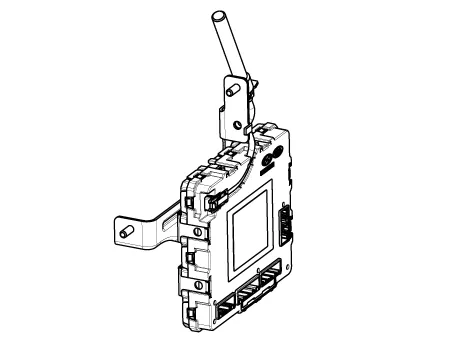Hyundai Ioniq (AE): Tire Pressure Monitoring System / TPMS Receiver. Description and operation
| Description |

| 1. | Mode
|
| 2. | Overview
|
| Operation |
| 1. | General Function
|
| 2. | General Conditions to Learn New Sensors :
|
| 3. | General Conditions to Un-Learn a sensor that is removed :
|
Replacement1.Remove the valve core and deflate the tire.2.Push the tire as illustration below by using tive change machine.3.Loosen the nut and then remove the TPMS sensor.
Removal1.Disconnect the negative (-) battery terminal.2.Remove the glove box.(Refer to Body - "Glove Box Upper Cover Assembly")3.Remove the smart key unit.
Other information:
Hyundai Ioniq (AE) 2017-2022 Service & Repair Manual: Blower Unit. Components and components location
Component Location1. Blower unit assembly Components1. Duct Seal2. Intake duct case3. Air intake door assembly4. Intake door5. Seal6. Intake duct case (A)7. Air filter cover (A)8. Intake actuator9. Air filter cover10. Air filter 11. Blower unit pad12.
Hyundai Ioniq (AE) 2017-2022 Service & Repair Manual: Blower Unit. Repair procedures
Replacement When prying with a flat-tip screwdriver or use a prying trim tool, wrap it with protective tape, and apply protective tape around the related parts, to prevent damage.1.Disconnect the negative (-) battery terminal.2.Recover the refrigerant with a recovery / recycling / charging station.
Categories
- Manuals Home
- Hyundai Ioniq Owners Manual
- Hyundai Ioniq Service Manual
- What to do in an emergency
- Warning type
- Using the Tire Mobility Kit
- New on site
- Most important about car
